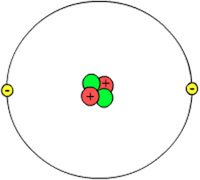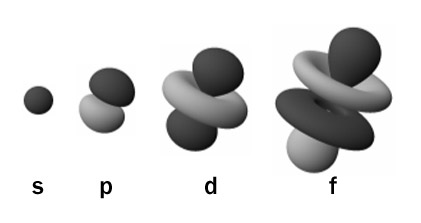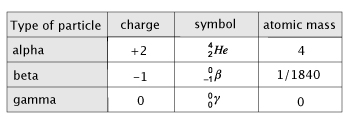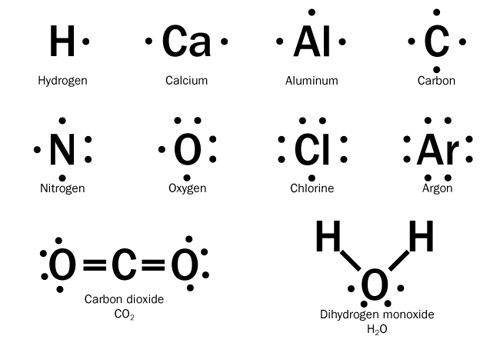 username@email.com
username@email.com
In this lesson, you will review the properties of matter, the organization of elements on the periodic table, and the types of chemical bonds.
Chemistry is the branch of science that focuses on the composition of matter—the material substances that make up the universe. The basic definition of matter is anything that has mass and takes up space. In short, matter composes the universe. In chemistry, we categorize matter into simpler, pure forms called elements.
Scientists have discovered that the universe is composed of roughly 109 elements – with the likelihood that more exist. The basic unit of an element is an atom and every atom of each element has the same properties and differs from the atoms of all other elements. A compound is formed when two or more atoms of different elements combine in a fixed proportion.
If atoms form a unit with a specific number of atoms of two or more elements, the combination is called a molecule. A molecule is the smallest unit of a substance that keeps all of the chemical and physical properties of that substance. A molecule can consist of one or more atoms chemically bonded together. Many elements are at their energetic happiest when they bond with themselves, forming diatomic molecules. Nitrogen and oxygen, two of the most common gases in our atmosphere, are examples of diatomic molecules (N2 and O2).
Matter that has a uniform composition is called a substance. The key to identifying a substance is that its composition and properties are always the same. Pure water is a substance; apple juice is not. Two samples of apple juice may have different chemical and physical properties: they might look and taste very different, depending on the type of apples, the length of time between picking them and pressing for juice, and many other variables. However, pure water retains all of its chemical and physical properties regardless of when or where it is collected.
There are two kinds of properties that you can use to tell one substance from another—physical properties and chemical properties. A physical property is a characteristic that describes the substance but does not alter the chemical composition of the substance, such as density, color, or hardness. Chemical properties are the substance’s ability to combine with other substances and can only be measured by changing the substance, such as the element iron’s ability to react with oxygen to form rust.
Some of the properties of matter depend on the amount of matter present. These extensive properties (or extrinsic properties) include its mass and its volume. Other properties, known as intensive properties (or intrinsic properties) of a substance are independent of the amount of material present. Intensive properties include density, melting point, boiling point, and electrical conductivity.
Most materials that you use are not pure. Although water is a substance, your tap water is not pure. In addition to water, it contains dissolved minerals, tiny amounts of metals, and carbon dioxide and oxygen from the air. Like apple juice, tap water is a mixture, a combination of two or more substances that retain their individual properties. Homogeneous mixtures are made of two or more distinct substances, but they have a constant composition within a sample. Clear apple juice is an example of a homogeneous mixture.
Homogeneous aqueous mixtures are also known as solutions. The term solution usually refers to a mixture in the liquid state, although homogeneous mixtures of gases or solids can also be called solutions. Heterogeneous mixtures consist of substances that retain their distinct characteristics and do not blend completely. Orange juice with pulp is an example of a heterogeneous mixture. Although a compound is made of more than one element, a compound is not a mixture. In a compound, atoms are held together in a fixed proportion, making a single chemical substance. In a mixture two different substances are mixed together, but the proportion can change.
Which of the following is a homogeneous mixture?
Choice B is the correct answer. Aluminum foil is a single, uniform substance and the other choices are heterogeneous mixtures.
John Dalton’s atomic theory was based on the observation that elements combine to form compounds in fixed proportions. He deduced that there must be a basic unit—an atom—of each element that exhibits the properties of that element. Atoms of different elements are necessarily different from one another.
The first subatomic particle to be discovered was the electron. Electrons have a negative electric charge and a negligible mass. Not long after the electron was discovered, the proton was also discovered. The proton has a positive charge and is about 1,840 times more massive than an electron. If an atom has equal numbers of protons and electrons (necessary to make it neutral), almost all of its mass consists of protons.
After more observations, scientists realized that protons and electrons did not account for all of the mass of an atom. The rest of the mass was made up of a particle called the neutron, an electrically neutral part of each atom’s nucleus. All of the protons and neutrons are clustered together in the center of an atom. This cluster, known as the nucleus, contains almost all of the mass—and very little of the volume—of an atom. The discovery of protons and neutrons, along with the determination that they all cluster together in the center of the atom, led to a model of the atom that looked something like this illustration.


The number of protons in the atomic nucleus is called the atomic number of the element. The atomic number of helium is 2. The mass of an atom is located almost entirely in its nucleus. The mass number of an atom is the sum of the number of protons and the number of neutrons. Most carbon atoms have six neutrons and all carbon atoms have six protons, so most carbon atoms have a mass number of 12.
In fact, some carbon atoms have even neutrons and some have eight neutrons. Atoms with the same number of protons and different numbers of neutrons are called isotopes. The mass numbers of these carbon isotopes are 13 and 14, respectively. A carbon isotope with eight neutrons can be indicated as carbon-14. A sample containing many atoms of an element will have a mixture of isotopes, so the average mass of the sample is a weighted average, called the atomic mass of the element. If you look at a periodic table, you see that the atomic mass of bromine is 79.9. Bromine atoms have 35 protons and 44 or 46 neutrons—bromine 79 and bromine 81. There are naturally slightly more 44-neutron atoms than 46-neutron atoms, so the atomic mass is slightly less than 80. Chemists use shorthand to indicate the isotopes of an element. Each element is represented by a one or two letter symbol. For example, Br stands for bromine. The mass number is indicated by a superscript before the symbol and the atomic number by a subscript. Bromine-79 is indicated by the symbol:

How many neutrons does an atom of zinc-64,  , have?
, have?
The correct choice is B. The number of neutrons is the mass number, 64, minus the atomic number, 30.
How can an atom of one element change into the atom of another? It happens all the time in our own sun. During a normal chemical reaction, however, this kind of transformation does not happen. But, in some reactions where atoms undergo changes that affect the nucleus, called nuclear reactions, it does. Some isotopes are unstable and their nuclei change over time by emitting particles and becoming more stable. This process, radioactive decay, can result in a change in the number of protons, and therefore, a change in the identity of the element. There are three types of radioactivity:
The table below summarizes the characteristics of the three types of radiation.



Which of the following is the product of the emission of a β particle by lead-212,  ?
?




The correct choice is D. Emission of a beta particle increases the positive charge of the nucleus, but does not change the mass.
There are a variety of chemical and physical properties of the elements, but they have patterns of similarity for different elements. The periodic table is a method for organizing the elements based on these similarities.
Elements in each column of the periodic table exhibit similar properties and are said to be in the same elemental group or family. For example, sodium and potassium, both in the first column of the table, have very similar chemical and physical properties because they share the same number of electrons in their outermost energy level.
The periodic table is also arranged by increasing atomic number (number of protons) from left to right in each row. Many elements can be classified by their position on the periodic table. Some of the regions of interest are:
As the number of protons increases, the number of electrons needed to balance their charge also increases. Since electrons move around the nucleus in non-specific clouds of probable energy levels and their charges repel each other, there is a limit to the number of electrons that can occupy a given cloud or energy level. At the lowest energy level, that number is two. The number of electrons increases to eight electrons at the highest energy level for the rest of the periodic table. This is an important value because atoms are particularly stable when their highest energy level has either zero or eight electrons (but just 2 electrons for hydrogen and helium). The noble gases are an excellent example with valence shells already full; they are the least reactive elements because they have no room to share or donate electrons.
Atoms react with one another in different ways, forming three basic types of chemical bonds:
When forming an ionic bond, the metal atom transfers its valence electrons to one or more nonmetal atoms. An atom with an unbalanced number of positive and negative charges is called an ion. The metal atom in this case becomes a positively charge ion called a cation and the nonmetal atom becomes a negatively charged anion. The cation and the anion both have more stable electron arrangements. Because they have opposite charges, the ions are attracted to one another, forming a strong bond.
In nonmetal atoms, the valence electrons generally are not removed to form a cation, so a different type of bonding occurs in nonmetals. In a covalent bond, two atoms share a pair of electrons. Usually, each atom contributes one electron of the pair, although in some cases, one atom can contribute both electrons. This type of chemical bonding is illustrated below.

Chemical bonds can also be depicted using Lewis dot diagrams. These are drawings that incorporate the symbol for the element, surrounded by dots that represent valence electrons and lines that are bonds. This illustration shows the Lewis dot symbols for several elements and compounds. The chemical bond can be indicated by a line, as shown here, or by two dots side by side. Notice that in carbon dioxide, each oxygen atom is bound to the carbon atom by a double bond, two pairs of shared electrons.

The properties of chemical compounds are a function of their bonds. In an ionic compound, each ion is attracted not to a single ion of opposite charge, but to several ions at once. Ionic compounds form crystals where the ions of opposite charges pack close together in a repeating pattern. For example, in sodium chloride, each sodium ion is surrounded by six chloride ions and each chloride ion is surrounded by six sodium ions. These strong, interlocking bonds mean that ionic compounds generally have high melting points and are brittle solids that tend to cleave along clean lines. Because the ions are locked into position, they do not conduct electricity well in solid form, but in solution, ionic compounds separate into positive and negative ions and can conduct a current.
Covalently-bonded compounds generally form molecules that react as individual units. Because the attraction between molecules is much weaker than the chemical bonds of ionic compounds, covalent compounds usually have lower melting points. Many of them are also gases or liquids at room temperature. When covalent compounds react, the bond between atoms breaks and different bonds form between atoms. Some covalent compounds, particularly carbon compounds, form long chains of repeating units held together by chemical bonds. These polymer, including plastic materials, have higher melting points than most other covalent compounds.
The correct choice is C. Ionic bonds generally form between a metal and a nonmetal.
On Earth, all matter occurs in one or more of three phases: solid, liquid, or gas. There are other phases of matter, but they are unusual under normal conditions. Under any given set of conditions, the phase of a substance depends on the interaction of its particles—atoms, molecules, or ions.
The phase of a particular substance is a function of temperature and the forces between its particles. At room temperature, substances that experience weak interactions are gases. For example, the noble gases are electrically very stable and have very low melting points. The molecules of water, on the other hand, have a larger degree of polarity. Shared electrons tend to spend more time around the oxygen atom than around the hydrogen atom. One part of the molecule is somewhat negative and the other part somewhat positive. Because of this, water molecules are more strongly attracted to one another than are the noble gas atoms, and water is liquid at room temperature. The strong electrical attraction of the ions in ionic compounds, such as sodium chloride, means that they are solid at room temperature.
Temperature is a measure of the motion, or energy, of particles. As temperature increases, particles move faster. Eventually the particles of a solid, such as ice, move fast enough to overcome some of the attractive forces and the ice melts to form liquid water. As additional energy is added, the particles move even faster, becoming a gas. There is a second factor in determining the phase of a material: As pressure increases, the particles are forced closer together. A phase diagram shows the relationship of temperature and pressure.
In the liquid and gas phases, particles are free to move around. This motion is random and changes as particles collide. Diffusion is the process of mixing that occurs as two substances in the gas or liquid phase mix with one another by way of random motion.